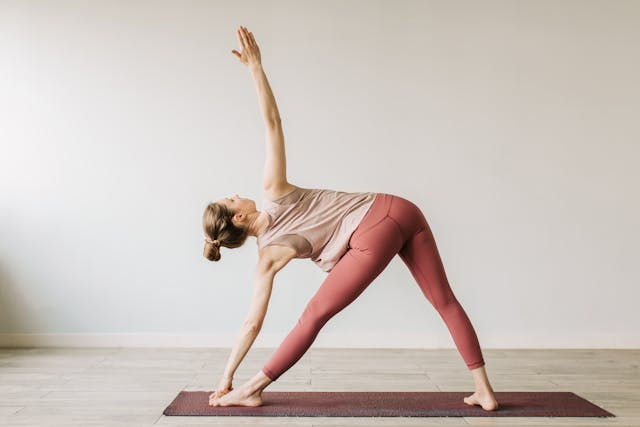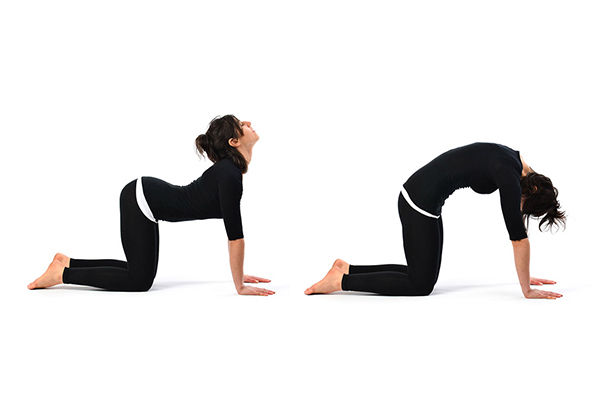Top 10 Hatha Yoga Poses for Beginners: Essential Asanas to Start a Balanced Practice
- Ana Cudin

- Nov 5, 2024
- 4 min read
Updated: Jul 11

Hatha Yoga: Introduction
Hatha yoga is an excellent way to introduce yourself to the practice of yoga, offering a balanced approach to building strength, flexibility, and mindfulness. This guide covers ten essential Hatha yoga asanas that are perfect for beginners, helping you to establish a strong and well-rounded practice. The poses are ordered in a sequence that begins with grounding and centering, gradually moving through strength and flexibility, and ending with
relaxation.
1. Sukhasana (Easy Pose)

Sukhasana, or Easy Pose, is a comfortable seated position that helps center your mind and body, making it an ideal starting point for any yoga practice. Sit cross-legged with your spine straight, hands resting on your knees or in your lap. Close your eyes and focus on your breath, allowing yourself to settle into the moment.
Benefits:
Opens the hips and chest
Promotes relaxation and inner calm
Encourages mindfulness
2. Tadasana (Mountain Pose)

Tadasana is the foundation of all standing poses and is essential for developing good posture and body awareness. Stand with your feet together, arms at your sides, and weight evenly distributed across both feet. Engage your thighs, lift your chest, and reach the crown of your head toward the sky, finding your balance and grounding yourself in the present.
Benefits:
Improves posture
Strengthens thighs, knees, and ankles
Increases body awareness
3. Vrksasana (Tree Pose)

Vrksasana, or Tree Pose, is a balancing pose that enhances stability and concentration. From Tadasana, shift your weight onto one foot and bring the sole of your opposite foot to rest on your inner thigh or calf (avoid the knee). Bring your hands together at your heart or extend them overhead. This pose strengthens your legs and core while sharpening your focus.
Benefits:
Strengthens legs and core
Improves balance and focus
Enhances mental clarity
4. Trikonasana (Triangle Pose)

Trikonasana is a powerful standing pose that stretches and strengthens the entire body. Begin in a wide-legged stance, turning one foot out 90 degrees. Extend your arms parallel to the floor and reach forward, tilting your torso to place your hand on your shin or the floor, while the other arm extends toward the ceiling. This pose improves flexibility in the hips and spine and promotes balance.
Benefits:
Stretches legs, hips, and spine
Strengthens core and legs
Improves balance and stability
5. Bidalasana (Cat-Cow Pose)

Bidalasana, or Cat-Cow Pose, is a gentle, flowing sequence that warms up the spine and prepares the body for deeper stretches. Start on your hands and knees in a tabletop position. Inhale as you arch your back and lift your head and tailbone (Cow Pose). Exhale as you round your spine and tuck your chin to your chest (Cat Pose). This pose encourages mindful movement and breath synchronization.
Benefits:
Improves spinal flexibility
Promotes mindful breathing
Relieves tension in the neck and back
6. Adho Mukha Svanasana (Downward-Facing Dog)

Adho Mukha Svanasana is a fundamental pose that provides a full-body stretch and serves as a transition between various other poses. From a tabletop position, lift your hips toward the ceiling, forming an inverted V-shape. Press your hands firmly into the mat, lengthening your spine and stretching your hamstrings and calves. This pose energizes the body while building strength in the arms and legs.
Benefits:
Stretches the spine, hamstrings, and calves
Strengthens the arms and shoulders
Energizes and rejuvenates the body
7. Virabhadrasana II (Warrior II Pose)

Virabhadrasana II, or Warrior II, is a dynamic standing pose that builds strength, endurance, and focus. From a wide-legged stance, turn one foot out 90 degrees and bend the front knee over the ankle. Extend your arms parallel to the floor, gazing over your front hand. This pose engages the entire body, promoting strength and stability.
Benefits:
Strengthens legs and arms
Increases stamina and concentration
Opens hips and chest
8. Paschimottanasana (Seated Forward Bend)

Paschimottanasana is a seated forward bend that stretches the entire back of the body, promoting flexibility and calmness. Sit on the floor with your legs extended straight in front of you. Inhale to lengthen your spine, then exhale as you fold forward from your hips, reaching for your feet or shins. This pose helps release tension in the hamstrings and back.
Benefits:
Stretches the spine, shoulders, and hamstrings
Improves digestion
Reduces anxiety and fatigue
9. Setu Bandhasana (Bridge Pose)

Setu Bandhasana is a backbend that strengthens the spine and opens the chest. Lie on your back with your knees bent and feet flat on the floor, hip-width apart. Press your feet into the mat as you lift your hips toward the ceiling, clasping your hands underneath your body if possible. This pose enhances spinal flexibility and stimulates the organs of the abdomen.
Benefits:
Strengthens the back, glutes, and legs
Opens the chest and improves lung capacity
Reduces stress and anxiety
10. Savasana (Corpse Pose)

Savasana is a restorative pose typically performed at the end of a yoga session. Lie flat on your back with your arms by your sides, palms facing up. Close your eyes and focus on your breath, allowing your body to fully relax and absorb the benefits of your practice. Savasana helps to calm the nervous system and bring about a deep sense of peace.
Benefits:
Relaxes the body and mind
Reduces stress and anxiety
Promotes a sense of inner peace
Conclusion
By incorporating these ten essential Hatha yoga poses into your routine, you can build a strong foundation for your practice. Each pose offers unique benefits, from improving flexibility and strength to promoting relaxation and mindfulness. As you move through these asanas, remember to focus on your breath and listen to your body, allowing your practice to unfold naturally and mindfully. Whether you're just beginning or looking to deepen your practice, these poses provide a balanced and holistic approach to yoga. Start your path to wellness with Ana Cudin Yoga—where expert guidance meets a serene practice. Explore the transformative benefits of Hatha Yoga in every session!








Comments